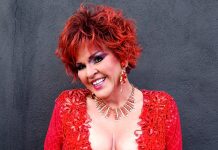
In 1971—two years after gay men, lesbians, drag queens, and gender non-conformists rioted during a police raid of the Stonewall Inn, a gay club in New York City—about 100 gay activists marched down Peachtree Street. That day marked one of the first pride parades in the country’s history. Since then the city’s LGBTQ community and the annual procession, now the largest parade in Atlanta, have been transformed.
Today as many as 300,000 people attend the weeklong festival, making it the biggest LGBTQ gathering in the Southeast. This year, in addition to the parade, pridegoers will find a dyke march, a trans march, a family zone, a “gray pride” area for seniors, and a college and career fair.
But though Atlanta Pride is an uplifting celebration of the LGBTQ community and the gains it has made, executive director Jamie Green-Fergerson notes, “We haven’t lost sight of the work we still have to do.” This year’s events come less than four months after the mass shooting at a gay nightclub in Orlando. And Green-Fergerson points out that state law has yet to protect employees against discrimination based on sexual orientation or gender identity, meaning Georgians can still lose their jobs for identifying as LGBTQ. “We’re still pushing to create equality and justice for all members of our community.”
This article originally appeared in our October 2016 issue.














